Cannabis News
How to Unf**k American Drug Laws
Published
10 months agoon
By
admin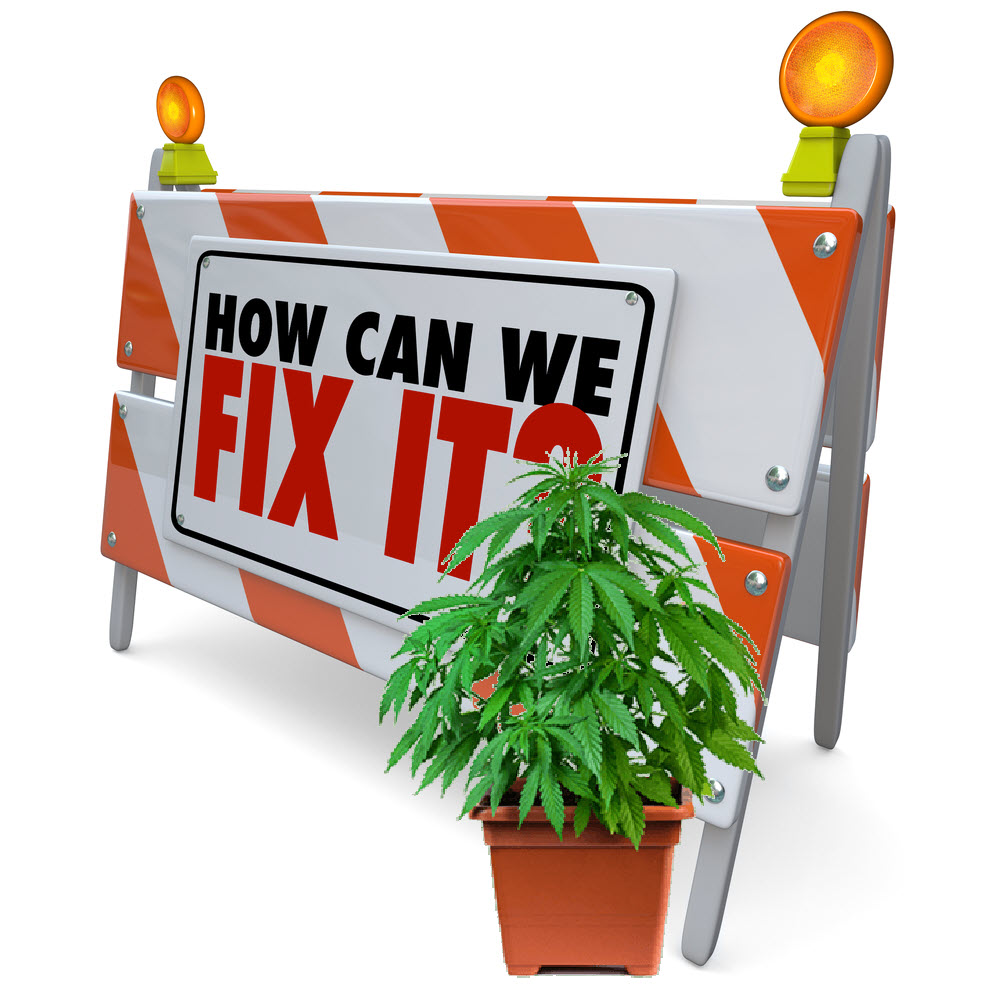

How to Unf**k America!
DISSOLVE THE DEA AND RE-NEGOTIATE DRUG AGREEMENTS WORLDWIDE!
The Drug Enforcement Administration (DEA) has long been a staunch opponent of cannabis legalization, so it comes as no surprise that they’ve rejected the Department of Health and Human Services’ (HHS) recommendation to reschedule cannabis to Schedule III under the Controlled Substances Act. The HHS review found cannabis to have medical value and a lower potential for abuse than currently scheduled.
However, the DEA believes the agency is wrong on this front.
This stance is unsurprising given the DEA’s role as the enforcer of drug laws that has largely criminalized cannabis for decades. Their opposition protects the interests of the powerful pharmaceutical industry which stands to lose billions if cannabis is rescheduled and medical programs expand.
It’s estimated that wherever medical cannabis is legalized, pharma loses roughly $10 billion in annual revenues as patients switch from prescription drugs to medical marijuana.
The DEA’s rejection of rescheduling leaves America at a crossroads. Do we continue allowing an agency with a vested interest in maintaining cannabis prohibition to override scientific evidence on the plant’s medical value? Or do we re-evaluate the necessity of the DEA’s existence altogether?
This antiquated drug war institution has not only perpetuated injustices against cannabis consumers but has also contributed to policies that make illicit substances even more unsafe and available on the black market. By clinging to an ideology focused on criminalization over harm reduction, the DEA’s presence is increasingly antithetical to the ideals of a free society.
As America reckons with the DEA’s hardline position, it’s worth examining whether disbanding the agency entirely and renegotiating international drug policies could be the first step in “unf**king” the nation’s catastrophic war on drugs. This article aims to showcase these reform ideas and a path forward.
While anonymous sources cited in the Wall Street Journal report claim there is tension between certain DEA officials and the White House over marijuana’s scheduling status, the agency itself has not taken an official public position on the matter.
The DEA has only stated that it is currently carrying out its scientific and medical evaluation of cannabis as required by law after receiving a scheduling recommendation from the U.S. Department of Health and Human Services (HHS).
HHS conducted its own assessment and advised moving marijuana from its current restrictive Schedule I status to the less prohibitive Schedule III under the Controlled Substances Act.
In testimony before Congress last year, DEA Administrator Anne Milgram said the agency would “keep an open mind” and “look at all the research” during its review process. This suggests the DEA has not pre-judged the outcome and is withholding any scheduling decision until it has thoroughly examined the evidence.
Importantly, the DEA has stressed that as the agency tasked with enforcing the Controlled Substances Act, it maintains final authority over determining cannabis’ proper scheduling – not HHS. While the Congressional Research Service stated it is “likely” DEA will accept HHS’ Schedule III recommendation based on past precedent, the DEA is not legally bound to that advisory opinion.
The purported resistance from some DEA officials cited anonymously aligns with the historical position of the agency and its past administrators who have vigorously defended marijuana’s Schedule I status quo. For example, the quote in the Journal from former DEA head Timothy Shea asserting “the science does not support rescheduling” reflects this entrenched anti-rescheduling mindset.
However, the DEA has made no definitive public statement adopting or rejecting HHS’ scheduling recommendation to date. All the agency has officially communicated is that it is presently conducting “an appropriate review of the science and available data” related to marijuana’s abuse potential, risk to public health, and medical value as required under the Controlled Substances Act.
In fact, Administrator Milgram pointedly declined to even acknowledge if there is any internal dissent when asked about the Journal’s reporting, telling Marijuana Moment: “I’m not going to comment on any internal DEA deliberations.”
Some cannabis reform advocates have expressed skepticism about the motivations behind the anonymously-sourced leaks claiming DEA opposition, especially given the consistent anti-rescheduling history and drug war ethos of the agency. As NORML’s deputy director stated, there’s a presumed faction within DEA that wishes to “cling to their ‘flat Earth’ cannabis policies at all costs” regardless of the evidence.
While this apparent internal wariness about rescheduling aligns with the DEA’s historic stance, the agency’s official public position for now is that it is dutifully carrying out the scheduling review process as required with an open mind. Definitive proof of whether the DEA will accept or reject HHS’ recommendation to reschedule cannabis to Schedule III is still pending completion of its evaluation in the coming months.
The Drug Enforcement Administration’s own mission statement makes clear that the agency’s purpose is to enforce the controlled substances laws and regulations of the United States. However, the DEA has catastrophically failed to achieve those objectives over the past several decades of waging its self-described “war on drugs.”
According to the DEA’s mission statement, the agency is tasked with “bringing to the criminal and civil justice system…organizations involved in the growing, manufacture, or distribution of controlled substances.” Yet despite an increasingly militarized effort and violating civil liberties in the name of this “war,” illicit drugs are more widely available and used today than when the modern Controlled Substances Act was established in 1970.
One key reason the DEA has been losing this war is because the Controlled Substances Act essentially grants a monopoly over the “manufacturing of Schedule I drugs” solely to well-funded pharmaceutical corporations and research institutions. By wrongfully placing cannabis in the most restrictive Schedule I category, the DEA has made it nearly impossible for anyone outside of big pharma to legally research and develop drugs derived from the plant.
This monopolistic blockade goes against stated American principles of facilitating open research, scientific inquiry, and a free market of innovative new medications. Instead, it protects the profit motives of large pharmaceutical companies by eliminating potential competition from cannabis-derived drugs and therapies.
Despite an overwhelming body of scientific evidence showing cannabis’ relative safety and potential medical benefits, the DEA stubbornly clings to antiquated dogmas labeling it a dangerous substance “with no currently accepted medical use.” This ideological inflexibility seems motivated more by a desire for the DEA’s own bureaucratic relevance than upholding facts, ethics or American principles.
After over 50 years and over $1 trillion spent enforcing draconian drug laws, it’s clear that the DEA’s militarized “war” has been an extraordinarily costly and tragic failure in terms of public health, civil liberties and human rights. Not only has prohibition caused a crisis of overincarceration, but it has also empowered violent criminal cartels while failing to reduce drug availability or use.
In the 1970s when the modern war on drugs was launched, around 25 million Americans had used illicit drugs. Today, after a trillion dollars spent on DEA enforcement efforts, over 119 million Americans have used prohibited substances according to federal data. Rather than reducing availability and use, drugs are unquestionably more prevalent across all demographics than before the DEA’s creation.
Not only has the DEA’s drug war failed to reduce drug use, but it has enriched and further empowered the highly organized, well-resourced, and increasingly ruthless criminal cartels that control the lucrative illegal drug trade. Before the harsh prohibitions, drug operations were unrefined and largely limited to small crime rings. But cartels grew into the multinational billion-dollar enterprises they are today precisely because of the high-risk, high-reward economics created by blanket criminalization.
Essentially, the DEA’s drug enforcement policies turbocharged the profitable international drug trade into a full-blown cartel-controlled battlefield with thousands of lives lost in drug-related violence every year. In many regions, murderous cartels exert more control than governments due to the lawlessness and fortunes enabled by harsh prohibition.
Simply put, the DEA has undeniably lost its militarized crusade to extinguish drug use and suppress drug supply through harsh criminalization. It is clear that continued prohibition and DEA enforcement actually makes drugs more available, more potent, more adulterated with dangerous additives, and more consolidated under the control of bloodthirsty criminal enterprises.
Since the DEA has manifestly failed in its purported core mission after a half-century of trying the same unsuccessful strong-arm tactics, it’s time for America to radically renegotiate its relationship with drugs and drug policy. Clinging to this quixotic, destructive “war on drugs” only perpetuates injustice, enriches murderous criminals, erodes civil liberties, inhibits research into potential cures, and debases America’s founding ideals.
The first step in renegotiating this relationship is ending the DEA’s fundamentally flawed, uniquely American strain of blanket drug criminalization that gifted cartels their very power and riches. Only then can the nation reclaim its principles and pragmatically regulate drugs in a manner that improves public health and safety.
The inescapable reality is that the DEA’s prohibitionist policies have utterly failed to curb drug use, availability or the power of violent criminal cartels. In fact, the evidence shows their harsh crackdown tactics have made the drug supply more dangerous and emboldened criminality. This raises the uncomfortable but imperative question – is the DEA itself more detrimental to America’s overall health and wellness than the drugs it futilely aims to eliminate?
By decentralizing drug policy away from the DEA’s one-size-fits-all criminalization model, America can open the door to responsibly exploring therapeutic psychotropics like psilocybin and LSD. These could provide psychiatric breakthroughs, yet their potential remains bottlenecked by the DEA’s restrictive drug scheduling system which fuels a cruel cycle of patient suffering.
Disbanding the DEA does not mean descending into some Mad Max drug apocalypse fantasy peddled by drug warriors. Rather, it simply unlocks the gates restraining scientific inquiry into these substances’ medicinal wisdom for the betterment of society.
Moreover, America cannot continue moralizing about illicit drugs being universally “bad” while simultaneously celebrating mind-altering drugs like alcohol that are scientifically more toxic and lethal than cannabis. This blatant hypocrisy and muddled messaging undermines credibility. Alcohol objectively fits the profile of a Schedule I narcotic far more than marijuana, yet it’s aggressively marketed during events like the Super Bowl while the DEA places its watchful eye on those seeking alternative paths outside the mainstream river of pharmaceutical junk.
For those adamant about “unfucking America,” one of the most imperative first steps is dismantling the DEA power structure and reclaiming individual bodily autonomy from the state’s draconian prohibition regime. America’s founders envisioned a society of personal freedoms, not one where federal foot soldiers infringe on liberties under the prejudiced guise of keeping “dangerous” plants from citizens who wish to consciously explore their own consciousness.
THE DEA ON CANNABIS, READ ON…
You may like
-
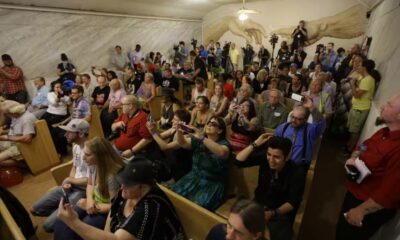

The unusual sacrament celebrated in this US church
-


New California Bill to Allow Limited Amount of THC in Hemp-Derived Products
-


Winter Romance Guide: Pairing Date Nights in Brooklyn with Infused Products
-
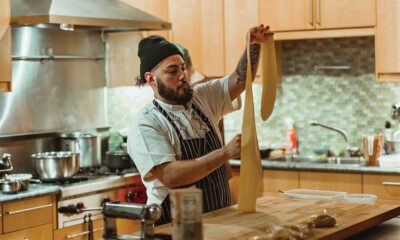

Windy City’s Weed Chef – GanjaVacations Jamaica
-
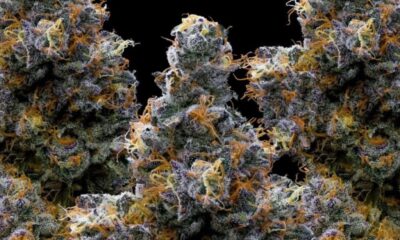

Weird cannabis strain delivers exceptional high
-


This Is New York Cannabis
Cannabis News
Oregon Cannabis 2025: Legislative Forecast and Report
Published
2 days agoon
January 24, 2025By
admin
The Oregon legislative session formally kicked off this week, on Tuesday, January 21st. It’s a regular session in 2025, meaning we’re in for a longer stretch — a 160-day calendar, versus the 35-day affair we see in even-numbered years.
If you read any of the news articles previewing the 2025 session, you won’t see cannabis as a legislative priority. Most likely, you won’t see it mentioned at all. Legislators seem both wary and weary of cannabis: the 2023 industry scandals implicating public officials are still fairly recent; and, after ten dynamic years and hundreds of adult use cannabis proposals, bills and laws, the program needs to breathe.
All of that said, the Cannabis Industry Association of Oregon (CIAO) and others have been working on their wish lists, and I do expect to see a few new cannabis laws in 2025. Most of it will be scaffolding and maintenance.
Below, I summarize the draft bills currently teed up in the 2025 session (with links), and give some cursory comments. But first I’ll add my usual caveat: a large majority of these introduced bills will not pass. Some contain overlapping concepts and will never go to committee, while others will fail after a hearing or two, or be consolidated into omnibus or placeholder bills.
This is one of the omnibus bills, and one to watch. Its drafter described it to me yesterday as “omnibus but not complete,” in fact. Here’s what’s in there as of today:
- Authorizes the destruction of hoop houses when executing a search warrant to investigate the unlawful production of marijuana.
- This strikes me as potentially problematic, as a due process issue.
- Requires the OLCC to make maps of licensed industrial hemp operations and marijuana production premises available to the Water Resources Department and the Department of Environmental Quality.
- An inter-agency communication issue. Been on the list for a while.
- Repeals the prohibition on a marijuana retailer locating within 1,000 feet of a building where a public prekindergarten or kindergarten program is provided.
- Something we’ve dealt with more than once, including with the Department of Justice way back when. Just a clarification needed.
- Allows the State Department of Agriculture to inspect biomass and processed industrial hemp stored at the location of a licensed industrial hemp operation.
Here are a few concepts that may be added:
- Grant OLCC authority to move from a one-year licensing cycle to a two-year cycle, as with alcohol.
- This could cut a lot of red tape for both OLCC and industry. The devil would be in the details as to marijuana retailer tax issues, but as a concept I really like it.
- Re-up the grant program targeting illegal grows in southwest Oregon, at current service levels.
- This grant has been around since 2018: the sheriffs and victim’s rights folks are the main proponents. If you’d like to see data, the Oregon Criminal Justice Commission program published a recent report here.
- Requires OHA to study the medical use of marijuana.
- This is a funny little bill and probably just a placeholder. We’ve only had a medical marijuana statute in Oregon for 27 years!
- Removes requirements that a registry identification cardholder who produces marijuana for personal medical use register with OHA.
- Requires a person responsible for a marijuana grow site that produces marijuana for medical use for three or more registry identification cardholders to apply for a designation from the OLCC.
- Directs OHA to issue electronic registration cards.
- Requires marijuana retailers to offer for sale medical grade cannabinoid items that contain not more than 20 percent total THC.
- Creates health care and employment protections for a person who is a registry identification cardholder.
This is an Oregon Cannabis Commission bill with some strong concepts, but it will need a lot of amending. OLCC has been slowly absorbing OHA’s medical marijuana program for years. At first that upset people, but a full windup is a fait accompli. SB 162 has a good chance to pass in some form.
- Requires OLCC to study cannabis.
- Directs OLCC to submit findings to the interim committees of the Legislative Assembly related to the judiciary not later than September 15, 2026.
Placeholder.
Same as SB 188. Placeholder.
- Ends special tax assessment for land, if the owner or the person in control of the land gets a civil penalty for growing marijuana on the land or is found guilty of growing it there.
- Makes an exception if the owner reasonably didn’t know about the pot or called the police as soon as they did know.
- Disqualifies land from farm use special assessments upon a final civil penalty or judgment of conviction for the illegal growing of marijuana against the landowner or person in possession and control of the land.
- Provides an exception for a landowner or other obligated taxpayer who reasonably lacked knowledge of the illegal growing of marijuana or promptly notified a law enforcement agency of the illegal growing of marijuana.
This bill appears to be poorly conceived and poorly structured at present. I’m guessing it doesn’t go anywhere for several reasons, not least of which will be the fiscal impact consideration.
- One-liner: establishes a division in the Department of State Police to enforce laws related to illegal marijuana cultivation.
I doubt it goes anywhere.
This one, along with SB 557 and 558 just below, are the CIAO bills. (You can view CIAO’s legislative priorities here.) Each of these bills are sponsored by Senator Floyd Prozanski, longtime industry supporter.
- Allows a marijuana producer, marijuana wholesaler, marijuana processor or marijuana retailer to use a motion detection camera system at a licensed premises.
- I was surprised this would be disallowed by OLCC.
- Directs OLCC to establish by rule an industrial hemp endorsement for marijuana producers.
- Prohibits OLCC from requiring physical tags or other identifiers on certain marijuana plants.
- This would be very useful and cut down on lots of pointless “compliance” and labor and waste.
- Allows a marijuana item transport vehicle to use a digital manifest and edit the manifest during transport.
- Let’s get with the times.
- Allows the State Department of Agriculture (ODA) to define “industrial hemp” by rule.
- Allows a marijuana licensee to engage in the interstate commerce of industrial hemp and marijuana. Becomes operative if federal law or the United States Department of Justice allow or tolerate the interstate commerce of industrial hemp or marijuana.
- I need to ask about this too. In 2019, we passed SB 582 which already allows export of marijuana when the federal environment changes. This proposal seems very similar.
- Requires at least one OLCC commissioner to hold a marijuana processor, marijuana producer, marijuana retailer or marijuana wholesaler license.
Creative, and probably going nowhere.
- Allows a marijuana licensee to provide samples of marijuana items to other marijuana licensees at temporary events registered with OLCC.
- Allows the commission to establish by rule a temporary events registration system. Allows a marijuana wholesaler to sell marijuana items to a marijuana retailer at a temporary event.
- Allows a marijuana producer to provide samples of seeds and immature marijuana plants to permitted workers.
- Allows a marijuana producer, marijuana processor and marijuana wholesaler to provide samples of marijuana items in specified amounts to permitted workers.
A bunch of rulemaking coming up for OLCC if this passes. But it all makes sense.
- Increases the maximum percentage of tax that the governing body of a city or county may impose on the sale of marijuana items. 20% of the proceeds go to the city or county at issue.
- Requires a percentage of a newly enacted or increased amount to be transferred to the county in which the collecting retail establishment is located, provided the county is eligible for Oregon Marijuana Account distributions.
This will get the cannabis industry’s hackles up, severely. Similar bills have been beaten back in prior years and I expect the same result here.
- Establishes a state public bank task force.
The Governor vetoed this bill last time around, citing “logistical challenges.” I haven’t had a chance to talk with the sponsors of SB 583, so I’m not sure what the plan is on reintroduction. As a guy from North Dakota — the only state in the union with a state-chartered bank; and as an equitable banking access proponent — I hope this one succeeds.
- Exempts from public records disclosure the residential address or personal phone number of an individual who holds a permit issued under ORS 475C.273.
The reference there is to marijuana worker permits. Good idea. The proposed law should probably sweep in ORS 475C.269 as well.
- States that the person must tell the OHA or the OLCC where the person plans to grow, process or produce the marijuana or psilocybin and who owns the site that the person plans to use. Specifies some cases when the OHA or the OLCC cannot give permission to the person.
- Requires an applicant for a license to manufacture psilocybin to submit to OHA information regarding the ownership and location of the premises to be licensed, and prohibits the authority from issuing a license in specified circumstances.
- Requires an applicant for a license to produce or process marijuana to submit to the OLCC information regarding the ownership and location of the premises to be licensed. Prohibits the commission from issuing a license in specified circumstances.
- Requires an applicant for a medical marijuana grow site or medical marijuana processing site registration to submit to the authority information regarding the ownership and location of the premises to be registered. Prohibits OHA from issuing a registration in specified circumstances.
This is a big and rangy bill with concepts overlapping some of the others. Expect it to be absorbed somewhere, in some form.
- Provides items that have cannabis in them must have a label that says a person has to be at least 21 years old to consume or use the item.
- Requires labels on marijuana items and inhalant delivery systems that contain industrial hemp-derived vapor items to include that the minimum age for consumption or use is 21 years of age.
Everyone would have to re-do their labels.
- Requires that marijuana items and stores warn people that the use of marijuana by a person who is pregnant might cause danger.
- Requires a marijuana retailer and a medical marijuana dispensary to post warning signs regarding the consumption or use of marijuana during pregnancy.
- Requires marijuana items and inhalant delivery systems that contain an industrial-hemp derived vapor item to include in labeling that consumption or use of marijuana during pregnancy may be dangerous.
Some speech and label issues here.
- Requires OLCC to study itself. Directs OLCC to submit findings to the interim committees of the Legislative Assembly related to economic development not later than September 15, 2026.
Placeholder. Same as 2276.
Similar to the two above.
- Directs OLCC to look at cannabis and report to the judiciary committees. Directs the commission to submit findings to the interim committees of the Legislative Assembly related to the judiciary not later than September 15, 2026.
I believe this one also comes via the Oregon Cannabis Commission, like SB 176. And like SB 176, it likely has legs but will also see some amendments along the way.
- Provides that organizations that provide hospice, palliative care or home health care services, as well as certain residential facilities, must write policies and teach their staff about the medical use of marijuana.
- Same requirement of any such organization or residential facility that is designated as an additional caregiver for a medical marijuana cardholder.
- Protects an organization or residential facility and its employees and contractors from certain criminal liability related to the medical use of marijuana.
- Prohibits the Oregon State Board of Nursing from taking disciplinary action against a nurse for discussing the medical use of marijuana with a patient. (Note: nurses are already allowed by statute to discuss medical marijuana use with patients, consistent with First Amendment protections)
- Expands the definition of “debilitating medical condition” for the medical use of marijuana. The specific add-on I’m seeing is “the need for hospice, palliative care, comfort care or other symptom management, including comprehensive pain management.”
______
That’s all she wrote for now. I’ll check in again at the end of the session, or before that with any significant developments.
Cannabis News
Why Does Cannabis Make Exercise So Much More Rewarding?
Published
2 days agoon
January 24, 2025By
admin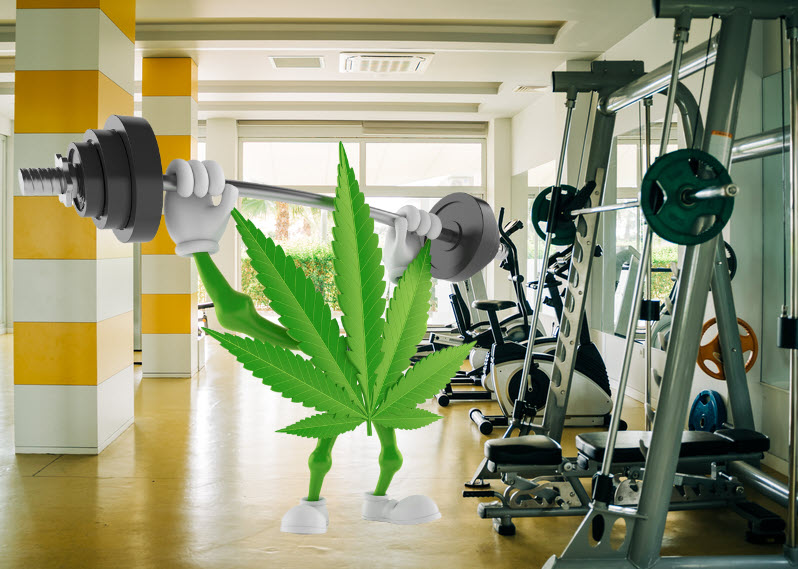

Why Cannabis makes exercise more rewarding
Ah, the “lazy stoner” stereotype – a relic of prohibition that’s aged about as well as “Reefer Madness.” As someone who’s been writing about cannabis for years, I’ve watched this tired cliché fade into obscurity, replaced by a much more nuanced understanding of who actually uses cannabis.
These days, you’re just as likely to find a joint in the gym bag of a professional athlete as you are in the purse of a suburban mom heading to yoga class. Cannabis consumers no longer fit neatly into the box that prohibitionists tried to stuff us in for decades. The plant has found its way into every corner of society, from high-powered executives to creative professionals, from extreme sports enthusiasts to retirees looking to stay active.
What’s particularly fascinating, and what many people might not realize, is that cannabis users tend to be more physically active than non-users. Yeah, you read that right – contrary to the old stereotype of the couch-locked stoner surrounded by empty chip bags, research shows that cannabis consumers generally move more than their non-consuming counterparts.
In fact, a new federally funded study has just confirmed what many of us in the cannabis community have known for years: people are significantly more physically active on days they use marijuana. This isn’t just anecdotal evidence anymore – we’re talking about hard data that directly challenges decades of anti-cannabis propaganda.
Today, we’re going to dive deep into the science behind this phenomenon, and I’ll throw in some personal insights from years of observing and writing about cannabis culture. Why does cannabis seem to enhance physical activity for so many users? Is it purely physiological, or is there something more complex at play?
Buckle up, fellow cannabis enthusiasts and curious minds – we’re about to explore why getting high might actually help you get moving!
Let’s dive into this fascinating federally funded study that’s challenging everything we thought we knew about cannabis and physical activity. The research team, comprised of experts from prestigious institutions including the University of Oklahoma Health Sciences and the University of Colorado Boulder, tracked 98 adult cannabis users over a four-week period, monitoring their physical activity levels and substance use patterns through smartphone-based surveys.
What makes this study particularly interesting is its real-time tracking methodology, known as ecological momentary assessment (EMA). Instead of relying on participants to remember their activities weeks or months later, researchers collected data about cannabis use, physical activity, and other behaviors as they happened. This approach provides a more accurate picture of how cannabis use relates to daily activities.
The results? They’re pretty eye-opening. The study found a clear positive association between cannabis use and moderate-to-vigorous physical activity (MVPA). In other words, people moved more on days they used cannabis. As the researchers noted, “Daily cannabis use was positively associated with daily physical activity.”
But why does this happen? The research team proposed several intriguing mechanisms. According to their findings, cannabis might increase exercise enjoyment and motivation, enhance recovery from physical activity, and activate the endocannabinoid system, which in turn triggers the dopaminergic system. This leads to increased feelings of psychological reward associated with physical activity. In simpler terms, cannabis might make exercise feel more rewarding, both physically and mentally.
However, like any good research, this study has its limitations. The sample size was relatively small at 98 participants, and the study only included people who already used cannabis at least once during the month. We still need more research to understand how these findings might apply to a broader population or to people who are just starting to use cannabis.
Here’s where things get really interesting though. Understanding the relationship between cannabis and exercise could have far-reaching implications for public health. As America grapples with an opioid epidemic and rising obesity rates, finding natural ways to make physical activity more appealing and rewarding could be game-changing. If cannabis can help people enjoy exercise more and recover better, it might offer a safer alternative to prescription painkillers for athletes and fitness enthusiasts.
This could tie perfectly into the growing “Make America Healthy Again” movement. Instead of viewing cannabis as a hindrance to health and wellness, we might start seeing it as a tool for promoting active lifestyles. Imagine if legal cannabis states started developing programs that combine cannabis education with fitness initiatives – we could be looking at a whole new approach to public health.
Of course, more research is needed. We need larger studies, longer-term follow-ups, and investigations into different populations and types of physical activity. But one thing’s clear: the old stereotype of the lazy stoner is going up in smoke, replaced by a more nuanced understanding of how cannabis might actually help people lead more active lives.
As someone who’s been both writing about cannabis and exercising regularly for years, I’ve noticed something fascinating about combining the two. Joe Rogan once described smoking weed before working out as enabling him to “feel every muscle” work individually, and I’ve got to say, he’s onto something. When you’re high during exercise, there’s an enhanced mind-body connection that’s hard to explain unless you’ve experienced it. It’s as if cannabis amplifies your proprioception – your awareness of your body’s position and movement in space.
But here’s where it gets really interesting. Most of us don’t work out in complete silence; we’ve got our carefully curated playlists pumping through our headphones. And this is where cannabis adds another layer to the experience. I recently wrote about what I call “Psychoactive Listening” – how cannabis seems to enhance our connection with music, making us more immersed in every beat and melody. When you combine this with exercise, something magical happens.
Think about it: cannabis, music, and movement create a perfect trinity for achieving what athletes call “the flow state.” You know that sweet spot where you’re not thinking about your workout anymore, you’re just… doing it? Cannabis seems to help quiet that chattering “monkey mind” that usually won’t shut up about how many reps you have left or whether you remembered to buy milk. Instead, you’re fully present in the moment, moving with the music, feeling every muscle engagement, completely immersed in the experience.
Speaking from personal experience, there’s definitely a difference between working out sober and working out with a little cannabis in your system. Don’t get me wrong – I’m not suggesting you get completely blazed before hitting the gym. But a light buzz can transform a mundane workout into an almost meditative experience. The post-workout euphoria? That’s on another level entirely. It’s like the natural runner’s high gets amplified, creating a sense of accomplishment and well-being that can last for hours.
Exercise already releases endorphins and activates our endocannabinoid system naturally – that’s why we feel so good after a workout. When you add cannabis to the mix, you’re essentially double-dipping into these feel-good mechanisms. The combination can make exercise feel less like a chore and more like an enjoyable activity you actually look forward to.
This trend of combining cannabis and fitness couldn’t have come at a better time. With obesity-related illnesses on the rise and many people struggling to maintain regular exercise habits, anything that makes physical activity more appealing is a win. If cannabis can help people find more joy in movement and make exercise feel less like a punishment and more like a reward, we might be looking at a powerful tool for promoting public health.
Who knows? Maybe the future of fitness isn’t just about counting reps and tracking macros – maybe it’s about finding that sweet spot where wellness meets wellness, where getting healthy and getting high go hand in hand.
As we wrap up our deep dive into cannabis and exercise, I can’t help but see a massive opportunity on the horizon. With fitness becoming an increasingly central focus in American culture and cannabis users proving to be more active than previously thought, we’re looking at the perfect storm for a new kind of wellness revolution.
Think about it: How many people would be interested in a “Stoned Yoga” class where the instructor understands how to guide slightly elevated participants through mindful movements? Or what about organized “High Runs” where like-minded individuals can experience that legendary runner’s high while actually being high? These aren’t just pipe dreams – they’re legitimate business opportunities waiting to be seized by enterprising cannabis enthusiasts.
The research backs up what many of us have known anecdotally: cannabis users like to move. We’re not just sitting around playing video games (though there’s nothing wrong with that either). We’re out there hiking, lifting, running, and yoga-ing our way to better health. The stereotype of the lazy stoner is dead, and in its place, a new archetype is emerging – the active, health-conscious cannabis consumer.
For those of you who’ve been looking to carve out your niche in the cannabis industry, this could be your moment. The intersection of cannabis and fitness is still relatively unexplored territory, ripe with possibilities. Whether you’re thinking about becoming a cannabis-friendly personal trainer, starting a stoner sports league, or launching a line of workout gear for the cannabis community, the time to act is now.
Remember, the future of wellness doesn’t have to choose between being healthy and being high. As this research shows, maybe the best path forward is one that embraces both. So grab your gym bag, pack your favorite strain, and get ready to be part of the green fitness revolution. The world of active stoners awaits!
Inspiration: https://www.marijuanamoment.net/people-are-more-physically-
active-on-days-they-use-marijuana-new-federally-funded-study-shows-smashing-lazy-stoner-stereotype/
WEED AND EXERCISE, READ ON…
THE LAZY STONER MYTH DEBUNKED, WHY PEOPLE ARE ACTIVE!
Cannabis News
Colorado Could Become a Global Hub for Marijuana Genetics
Published
3 days agoon
January 23, 2025By
admin
Ability to source marijuana genetic material from outside Colorado
Senate Bill 23-271, which went into effect in early 2024, aims to enhance Colorado’s marijuana industry. A key provision allows licensed marijuana cultivators to source “genetic material” from approved entities in other jurisdictions. Genetic material is defined as material used to propagate cannabis plants, including:
- Immature plants and small plant fragments with ≤0.3% D9 THC on a dry weight basis;
- Cannabis seeds, which grow into marijuana; and
- Tissue cultures.
This law significantly expands sourcing options for Colorado cultivators, including opportunities, both domestic and international. Colorado cultivators can now bring in popular OG strains from around the world.
The anticipated marketing frenzy, however, hasn’t fully materialized. The answer lies in the complexity of transporting genetics across state and international lines.
That’s where we come in. With years of experience advising clients on compliant cross-border transportation, we understand the nuances in the law. Below is a high-level overview of the challenges involved. If you or your clients are ready to make an impact in Colorado’s market, please reach out to me or my team— we’d be happy to assist.
Marijuana genetics: are they hemp or marijuana?
This question – the Schrödinger’s Cat of the cannabis industry – is both simple and complex. In short, under federal law, marijuana genetics appear to be hemp. However, they are neither strictly hemp nor marijuana until a state makes that determination. In fact, in some states they may be both marijuana and hemp.
- “Marihuana” (referred to in this blog post as “marijuana”) is defined in the Controlled Substances Act (“CSA”), as “all parts of the plant Cannabis sativa L., whether growing or not; the seeds thereof; the resin extracted from any part of such plant; and every compound, manufacture, salt, derivative, mixture, or preparation of such plant, its seeds or resin.”
- Marijuana does not include “hemp” as defined in the Agricultural Improvement Act of 2018 (the “2018 Farm Bill”).
- Hemp is defined as the plant Cannabis sativa L. and any part of that plant, including the seeds thereof and all derivatives, extracts, cannabinoids, isomers, acids, salts, and salts of isomers, whether growing or not, with a delta-9 THC concentration of not more than 0.3 percent on a dry weight basis.
In January 2022, the DEA issued a letter stating that cannabis seeds and other genetic material with ≤0.3% D9 THC meet the definition of hemp and aren’t controlled substances. Importantly, the DEA further clarified in a December 2022 letter that if the cannabis seed germinates into material exceeding 0.3% THC, then “that material” falls within CSA control. DEA’s use of “that material” rather than specifying the seed used to grow “that material” further supports that DEA, at least for now, does not view marijuana genetics (testing at ≤0.3% THC on a dry weight basis) as marijuana.
While these DEA letters aren’t legally binding, they suggest that marijuana genetics, when testing at ≤0.3% D9 THC, are considered hemp under federal law.
State complexities with marijuana and hemp genetics
Since marijuana genetics are currently treated as hemp under federal law, they can move across U.S. state and international lines. However, the 2018 Farm Bill allows states to impose stricter laws.
Some states, like neighboring Arizona, define marijuana genetics as material that will only grow into hemp. Others, like Arkansas, do not expressly exempt “hemp” form the definition of “marijuana,” creating a situation where the genetics are both hemp and marijuana. And States like Mississippi and Minnesota prohibit the sale of cannabis sativa seeds all together.
Understanding both federal and state laws is critical to ensuring a compliant transfer into Colorado. If the exporting state defines the genetics as hemp and permits exports, cultivators can likely import them into Colorado. If the exporting state does not define marijuana genetics as hemp, then selling or transporting marijuana genetics could lead to criminal violations under a state’s marijuana laws.
International considerations
An international import of marijuana genetics must comply with both state, federal, and international laws. As long as the export meets USDA and Customs requirements, federal law typically won’t pose an issue. However, it’s essential to consider the laws of the exporting country, and importing US state, ensuring that the genetics are classified as hemp by both governments. Otherwise, the transport may not only violate a US state’s laws, but also international law.
Conclusion
Licensed Colorado cultivators seeking unique marijuana strains from outside the state—whether from California, Oregon, or countries like Colombia and Jamaica—must navigate both federal and state laws. Harris Sliwoski has extensive experience helping operators transfer cannabis genetics. With our new Denver office, we are ready to assist Colorado cultivators with global genetics imports. A “Tour de Cannabis” anyone?

The unusual sacrament celebrated in this US church

New California Bill to Allow Limited Amount of THC in Hemp-Derived Products

Winter Romance Guide: Pairing Date Nights in Brooklyn with Infused Products

Windy City’s Weed Chef – GanjaVacations Jamaica

Weird cannabis strain delivers exceptional high

This Is New York Cannabis

PoliticsThese States Are The Most Likely To Legalize Marijuana In 2025, According To Top Advocacy Groups

5 Key Benefits of Self Pleasure

Colorado Doctors Could Prescribe Psilocybin After Federal Approval Under New Bipartisan Bill

Cannabis-infused products now available on DoorDash, company says

Distressed Cannabis Business Takeaways – Canna Law Blog™

United States: Alex Malyshev And Melinda Fellner Discuss The Intersection Of Tax And Cannabis In New Video Series – Part VI: Licensing (Video)

What you Need to Know

Drug Testing for Marijuana – The Joint Blog

NCIA Write About Their Equity Scholarship Program

It has been a wild news week – here’s how CBD and weed can help you relax

Cannabis, alcohol firm SNDL loses CA$372.4 million in 2022

A new April 20 cannabis contest includes a $40,000 purse

Your Go-To Source for Cannabis Logos and Designs

UArizona launches online cannabis compliance online course
Trending
-

 Cannabis News2 years ago
Cannabis News2 years agoDistressed Cannabis Business Takeaways – Canna Law Blog™
-

 One-Hit Wonders2 years ago
One-Hit Wonders2 years agoUnited States: Alex Malyshev And Melinda Fellner Discuss The Intersection Of Tax And Cannabis In New Video Series – Part VI: Licensing (Video)
-

 Cannabis 1012 years ago
Cannabis 1012 years agoWhat you Need to Know
-

 drug testing1 year ago
drug testing1 year agoDrug Testing for Marijuana – The Joint Blog
-

 Education2 years ago
Education2 years agoNCIA Write About Their Equity Scholarship Program
-

 Cannabis2 years ago
Cannabis2 years agoIt has been a wild news week – here’s how CBD and weed can help you relax
-

 Marijuana Business Daily2 years ago
Marijuana Business Daily2 years agoCannabis, alcohol firm SNDL loses CA$372.4 million in 2022
-

 California2 years ago
California2 years agoA new April 20 cannabis contest includes a $40,000 purse





